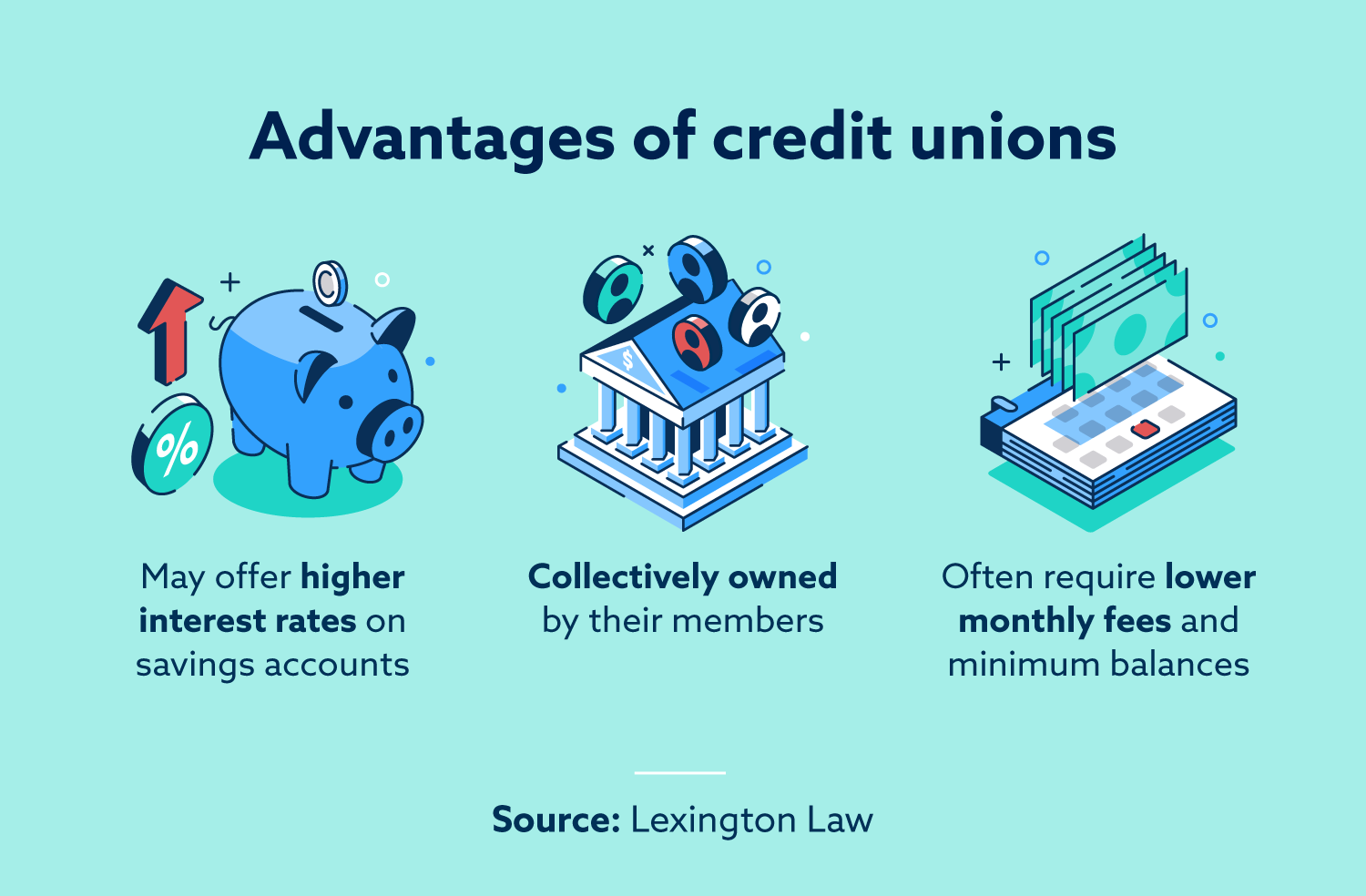Federal Credit Union: Reputable and Safe Financial in Wyoming
Federal Credit Union: Reputable and Safe Financial in Wyoming
Blog Article
The Ultimate Overview to Comprehending Cooperative Credit Union

Debt unions stand as one-of-a-kind economic entities, rooted in concepts of mutual assistance and member-driven procedures. As we browse with the details of credit rating unions, an informative trip waits for to shed light on these member-focused institutions and how they vary from standard banks.
What Are Lending Institution?
Lending institution are member-owned banks that supply a variety of banking solutions to their participants. Unlike standard banks, cooperative credit union operate as not-for-profit organizations, indicating their main focus gets on offering their participants rather than maximizing revenues. Members of a debt union typically share a typical bond, such as benefiting the same employer, coming from the same community, or becoming part of the same organization.
One of the key benefits of lending institution is that they commonly provide greater rate of interest on savings accounts and reduced rate of interest rates on car loans compared to financial institutions. Wyoming Credit Union. This is due to the fact that credit score unions are structured to benefit their members directly, enabling them to hand down their revenues in the type of much better rates and less charges. Additionally, lending institution are known for their individualized customer care, as they prioritize developing partnerships with their participants to comprehend their special monetary demands and goals
History and Development of Cooperative Credit Union
The origins of member-owned monetary cooperatives, recognized today as lending institution, trace back to a time when communities looked for options to conventional banking establishments. The concept of lending institution come from in the 19th century in Europe, with Friedrich Wilhelm Raiffeisen frequently attributed as the leader of the cooperative banking motion. Raiffeisen started the first identified credit rating union in Germany in the mid-1800s, emphasizing community assistance and self-help concepts.
The advancement of lending institution continued in North America, where Alphonse Desjardins established the initial cooperative credit union in Canada in 1900. Soon after, in 1909, the initial U.S. credit report union was formed in New Hampshire by a group of Franco-American immigrants. These very early lending institution operated the essential principles of mutual support, democratic control, and member ownership.
In time, cooperative credit union have expanded in appeal worldwide due to their not-for-profit structure, focus on serving participants, and providing competitive monetary product or services. Today, lending institution play a crucial role in the monetary industry, supplying community-oriented and obtainable banking alternatives for people and services alike.

Membership and Qualification Standards
Subscription at a credit rating union is generally limited to individuals satisfying details qualification requirements based on the establishment's starting principles and regulative needs. These standards commonly consist of factors such as geographical place, employment condition, membership in certain organizations, or association with certain teams. Cooperative credit union are understood for their community-oriented strategy, which is shown in their subscription requirements. Hybrid Line of Credit. For example, some cooperative credit union may only offer individuals that work or live in a certain area, while others may be tailored to staff members of a particular business or members of a particular association.
Additionally, cooperative credit union are structured as not-for-profit organizations, meaning navigate here that their primary goal is to offer their participants rather than create earnings for investors. This emphasis on participant solution often converts into even more personalized focus, reduced costs, and competitive rate of interest on financings and cost savings accounts. By fulfilling the eligibility standards and ending up being a member of a lending institution, individuals can access a variety of economic services and products tailored to their details requirements.
Providers and Products Used
One of the essential facets that establishes lending institution apart is the diverse array of economic services and items they use to their members. Cooperative credit union typically give standard financial solutions such as financial savings and inspecting accounts, lendings, and bank card. Members can likewise gain from investment services, including retired life accounts and economic preparation help. Numerous credit unions offer affordable interest prices on cost savings accounts and loans, along with reduced fees compared to typical banks.
Additionally, credit unions typically provide practical online and mobile banking alternatives for members to conveniently manage their funds. They may provide benefits such as common branching, enabling participants to access their accounts at redirected here various other lending institution across the country. Some lending institution also supply insurance coverage products like vehicle, home, and life insurance policy to assist members protect their properties and enjoyed ones.

Benefits of Banking With Lending Institution
When thinking about banks, exploring the advantages of banking with lending institution reveals one-of-a-kind advantages for participants looking for individualized service and competitive prices. One significant advantage of credit score unions is their concentrate on personalized customer care. Unlike big banks, cooperative credit union are member-owned and prioritize structure solid partnerships with their members. This implies that cooperative credit union staff commonly have a much deeper understanding of their participants' financial demands and can offer customized solutions to aid them accomplish their goals. In addition, debt unions are recognized for supplying affordable passion prices on cost savings and car loans accounts. Since they are not-for-profit companies, cooperative credit union can usually supply lower finance prices, higher cost savings prices, and reduced fees compared to traditional banks. This can result in substantial expense savings for participants in time. Generally, banking with a credit scores union can supply an extra individualized, official statement cost-efficient, and member-centric economic experience.
Verdict
In final thought, credit score unions stand out as member-owned monetary organizations that focus on offering their participants over making the most of profits. With beginnings dating back to 19th century Europe, credit unions follow principles of shared help and member ownership.
Debt unions are member-owned financial organizations that use a variety of financial solutions to their members. The principle of credit report unions stem in the 19th century in Europe, with Friedrich Wilhelm Raiffeisen usually attributed as the leader of the cooperative banking activity.The evolution of credit report unions proceeded in North America, where Alphonse Desjardins established the initial credit score union in Canada in 1900. Credit score unions typically provide typical banking services such as financial savings and checking accounts, loans, and credit rating cards.When considering monetary institutions, checking out the benefits of financial with debt unions discloses unique advantages for participants seeking personalized solution and competitive rates.
Report this page